Timeline

Slate Hill
Old School Baptist Church
Context
1720’s
to 1740’s
Formation of a Church in Brookfield
Several members of the Baptist Church in Warwick form a new congregation. They meet in various homes and barns until a place of worship can be constructed.
1780’s
to 1830’s
First Great Awakening
A revival movement in the Colonies which had a profound effect in increasing practical morality, resulting in improved religious attendance. The revivals introduced several concepts to many attendants:
-
Sermons were emotional, rather than the “theologically dense and prepared in advance” counterparts of many liturgical services of the day. (Wikipedia)
-
Discourses focused on personal sin and the need for redemption.
-
Lay worshipers (mainly literate men) were encouraged to give extemporary prayers and sermons; formal religious training was not emphasized.
1783
End of the American Revolutionary War
Founding member William Kirby’s reflection on the period of the Revolutionary War: “I began to read and meditate to scriptures; but this was in the time of the American War, and little religion seemed to be in the hearts and minds of the people.”
Area Details
Present day Wawayanda was originally part of the Town of Minisink. Approximately 2,200 people lived in the area, and the hamlet currently named Slate Hill was known as Brookfield.
Second Great Awakening
The end of the war ushers in a new period of revivals throughout the Northeast and Midwestern U.S., with the focal point being central and western New York state. This second wave of revivals was larger, and had an even greater influence on the American people.
1791
Building Construction Started
The current plot of land was donated by Deacon John Hallock, and construction began early in 1792. The original church was only the enclosure, and the congregation met on a loose-laid wood floor and benches.
1804
Church’s Interior Constructed
The interior floors, pews, and pulpit were all constructed at this time for the sum of $300.
1824
Brookfield (hamlet) Renamed Slate Hill
The postal service brought about renaming the hamlet, as it preferred not to duplicate the Brookfield, NY already present in Madison County.
1828
Steeple Construction and Stair Relocation
1830's
Slate Hill is a Growing Center of Business
At the time, Slate Hill was larger than Middletown, with businesses such as a newspaper, a tannery, three mills (grist, plaster, and timber) and multiple retail businesses.
1830's
to 1850's
The stair to the gallery level was removed from the corner of the interior, and a new stair constructed within the new steeple footprint, in order to provide some additional seating. The steeple addition did not contain a bell.
1861
to 1865
American Civil War
1850's
to 1900
Third Great Awakening
While the first two movements aligned closely with the Old School Baptist teachings and method of worship, this period focused on creating missions and religious societies, and probably served to draw attendance to other churches in the area.
1832
Primitive, or Old School, Baptists split from New School Baptists
While each church is governed separately, an address on September 28 at the Black Rock Church in Butler, MD, more or less formalized the split between those Baptist churches which embraced the modern movement of missionary work and religious societies, and those of the Old School which viewed missionary societies, theological seminaries, and Sabbath schools as modern mistakes not approved by the true church.
Church Attendance at Its Peak
The church is the heart of the Slate Hill/ Wawayanda community. About this time, the church’s membership grew to about 500 persons. Since the church could only accommodate about 400 people, it is said that the windows were opened and the remaining attendants listened from their carriages outside. And you thought drive-in churches were modern!
1876
Extensive Repairs
No changes were made to the church’s appearance or plan, but the repairs were extensive enough for the church to establish a building committee and hold a rededication in 1877.
1882
Centennial Celebration
By this time, membership was starting to decline. As old members died, young members moved away. The Old School Baptists do not believe in evangelization, and movements of the day did not favor the Old School Baptist dogma and theology. However, the remnants of the myrtle decorations from a centennial celebration remain on the walls.
1930's
Church Ceases Continuous Operation
In the 1930’s, the last two members of the Church were interred in the cemetery on site. At some point early in the century, the remaining Old School Baptist members began rotating attendance between this and other area churches. Eventually this was reduced to a yearly meeting. The church continues to have several ecumenical (open to all denominations) services each year.

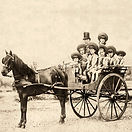

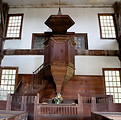
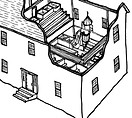
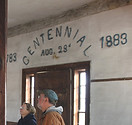
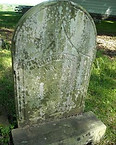
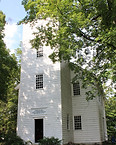
Hover over the images to expand!
Modern Day
Building is Maintained by Wawayanda Community
Since the 1930’s the Church has maintained a Board of Trustees, and volunteers have remained active in providing maintenance and care to preserve the history of this building. In recent decades, historical societies and community agencies have helped to raise money as needed for repairs, many in preparation for the 1992 Bicentennial Celebration.
